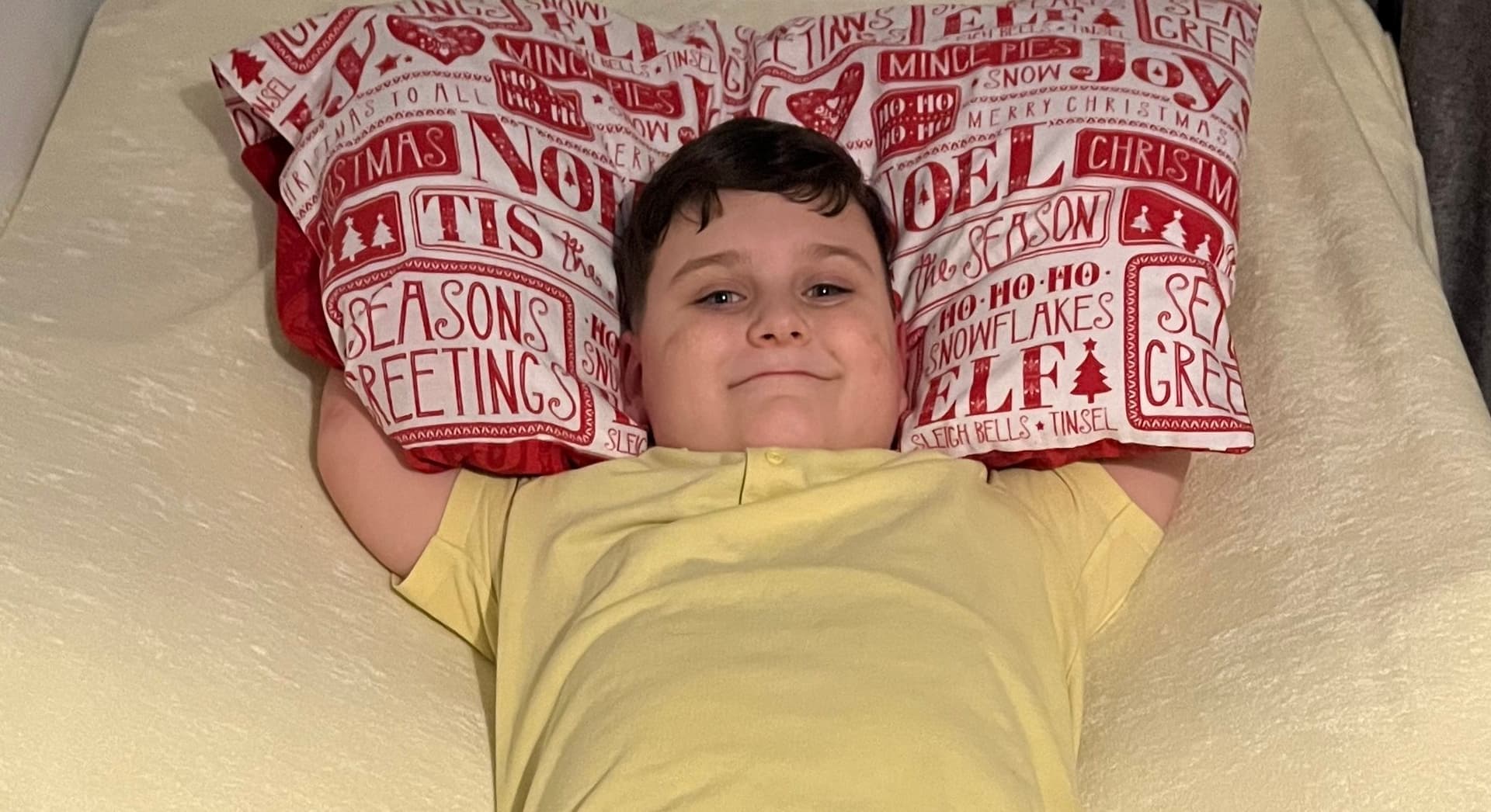
is now part of
Joy Parenting Club!
Families and care organisations using Heba will now have the option to also join Joy. For any questions, reach out to us at hello@heba.care

Families and care organisations using Heba will now have the option to also join Joy. For any questions, reach out to us at hello@heba.care

July 3, 2024
Simple Stuff Works director Sarah Clayton gives us the low down on properly supporting the positioning of our children, every moment of their day.
Children, young people and adults who find it difficult to move often need support in sitting, standing and lying. If this support doesn’t fit, doesn’t recognise how the child functions or is missing altogether, it will lead to highly predictable harm.
Everyone spends a huge amount of time lying down, maybe even more so if you live with disability. Children, for example, spend three times longer in bed than they do in school – so what happens there is incredibly important.
What is postural care?
Postural care is sometimes called therapeutic positioning, postural management or supported lying. It all means the same thing really – protecting and supporting a person’s body, enabling them to move around and to live as healthy a life as possible.
Let’s stick to “postural care” here as that will give you the most information if you choose to consult Dr Google. It involves an assessment of the child’s body shape, their structural symmetry as well as their movement, consideration of their goals, risks they may face and the family’s capacity to introduce new equipment.
Ultimately we use postural care to protect children from secondary complications linked to movement difficulties such as scoliosis, pain, hip dislocation and to repeated chest infections.
A family mission
My sister and co-director, Anna, and I were really lucky to grow up with equally passionate and innovative parents, our mum and dad, Liz and John Goldsmith. For over 30 years they supported people with complex disability and invented equipment and measuring techniques that are now recognised all over the world. Their passion rubbed off on us, along with their values.

As kids we met parents working their backsides off, children the same age as us who faced huge challenges but just wanted to play, adults with ambitious dreams and aspirations… we had no idea that this wasn’t a typical childhood. In the last 10 years of their work their attention turned to the thousands of hours a year that children and adults spend lying down.
As their work developed, we saw how life-changing the introduction of gentle, respectful postural care could be. We also saw how difficult it was for families to get access to equipment and information. The injustice of this drove us to work together to continue what our parents started.
The story isn’t quite as simple as that, though. In 2007, my daughter was diagnosed with a malignant brain tumour at the age of six. She has needed postural care at different times during her treatment, both for the tumour and following a significant stroke when she was nine. Now 23 years old, she attends a specialist residential college for young people with learning disabilities.
As a family we had contact with countless professionals and yet, not a single one talked to us about postural care. This confirmed what we already knew – there are too many holes in a particularly flimsy net and too many children are falling through.
The benefits of postural care
Postural care is used to protect a child’s body symmetry as they grow. The more asymmetric a child becomes, the more challenges they and their family face. The equipment becomes bulkier and more complex with greater chances of it being incorrectly assessed or fitted.
Secondary complications, such as scoliosis or hip dislocation, may lead to pain and discomfort or even the possibility of surgical interventions and more hospital appointments or medications.
Time spent in school or with friends may also be limited – we are currently supporting a young man who hasn’t been in school for two years due to a poorly fitting wheelchair, for example.
The principles of postural care are not complicated but we know that the systems supporting families can be. The more information families have about how to protect their children, the better equipped they are to navigate those systems.
Postural care in practice
A young man called Taylor was struggling with his prosthetics due to his centre of gravity being so far forward because of his lordosis [curve of the lower back]. The lordosis came from his lying position because he was forced to lie on his side and tummy, as he couldn’t lie comfortably without support on his back.

The two photos of him standing are taken six weeks apart. We have permission from Taylor to share his story.

Building awareness
Why do we not often hear about “postural care” in the paediatric allied health space? I’m not sure. Our work on postural care in lying is almost 30 years old. Maybe it’s because it is a family-led approach. It isn’t something that practitioners can ‘do’ to us as families – we need to manage this aspect of care ourselves.
Maybe it’s the chaotic and disjointed systems we have to work within – getting the wheelchair OT to talk to the school physio, community nurse, paediatrician, orthopaedic surgeon, respiratory specialist…
Ultimately postural care touches every aspect of a child’s life, but the practitioners supporting us only touch on their speciality. Maybe it’s society’s chronically low expectations for our kids. The assumption that, don’t all kids with complex neuro-disability end up with complicated body shapes?
Where to start
Visit the Simple Stuff Works YouTube channel– there are a lot of videos there that will give you the basics of the theory that sits behind everything we do. Then check out Born at The Right Time, where you’ll find online, on-demand courses that build on the basics.
Talk to your OT or physio, ask them about whether they offer The Goldsmith Indices of Body Symmetry to measure the effectiveness of the positioning strategies they are advising on. If they don’t know these measures and you are in the UK, they are recognised best practice here and can be found if you Google ‘reasonable adjustment guidance postural care learning disabilities’.
Finally, think about where your child spends their time. Across 24 hours, when are they sitting, standing or lying? The bigger the slice of the pie, the more attention needs to be paid to that area – get that right and everything else will be easier.
It’s never too late
If your child is young and symmetrical, you have an amazing opportunity to protect their body shape as they grow. If your child is older and has already experienced changes in their body shape, THIS IS NOT YOUR FAULT.
Don’t waste time beating yourself up for not knowing something you don’t know. Restoration of body shape is possible, it takes patience and time but there is always something we can do to improve a person’s positioning.
Visit Simple Stuff Works for more information and resources around postural care.